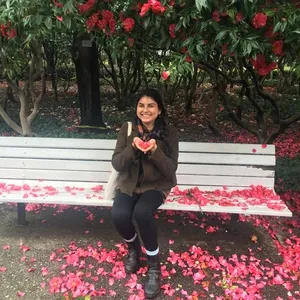Butterfly pea flower tea, a caffeine-free tea also known as Asian pigeon-wing tea, is gaining popularity in the United States but has been around for centuries with origins in Southeast Asia. This tea is made from the blue flowers of the Clitoria ternatea plant that grows in tropical and subtropical regions of the world. Today, this plant grows all over the world in places like Costa Rica, Australia, Thailand and the Philippines.
Butterfly pea flower tea is particularly known for its ability to change colors depending on the pH. This tea gets its blue hue from the dried blue butterfly pea flowers steeped in hot water. Add a little bit of lemon juice and the acidity will change the tea’s color from blue to purple.
Health Benefits
Butterfly pea flower tea contains the antioxidant proanthocyanidin, which promotes collagen growth and skin cell elasticity. Acetylcholine in this plant promotes brain function and memory. Not to mention, butterfly pea flower tea also helps reduce anxiety, improves heart health, promotes blood flow and so much more.
In Cooking
The flavor of Asian pigeon-wing tea is most comparable to the light earthy and woody elements of a green tea. It is used in dishes around the world that include blue rice or flowers dipped in a batter and deep fried. It is even incorporated into things like cocktails and smoothie bowls for added aesthetic appeal.
In Drinks
This tea is fun to play and experiment with in the kitchen. Make this drink on a chill night with friends and create your own colorful cocktail. If you’re not a fan of the flavor of the butterfly blue tea, it can be easily disguised with some viscous liquids like coconut milk and cream, but as long the drink is pretty, then it’s okay, right?
To make butterfly pea flower tea, steep ten dried or fresh flowers in hot water for 15 minutes. Then, the tea can be strained and enjoyed either alone or with a sprinkle of lemon juice to change the color from blue to purple.
Where To Find It
Butterfly pea flower tea can be found at some health grocery stores, and the drink itself can be found at trending restaurants near you. In Southern California, I have spotted this tea in drinks like blue horchata and lemonade at a cafe less than a mile away from me. In Northern California (Davis, to be exact), butterfly pea flower tea is on the menu and served as a bubble tea at MandRo Teahouse and in the Stardust Bottle listed in the menu at TeaOne.
Asian pigeon-wing tea is still a bit obscure in America, but it is quickly growing in popularity and showing up on menus of trendy restaurants. After learning about this color-changing tea, I have started noticing it everywhere. From places like the boba shop down the street and the social media pages of my favorite restaurants in my hometown, I have been seeing the tea left and right. I highly recommend giving it a try.


